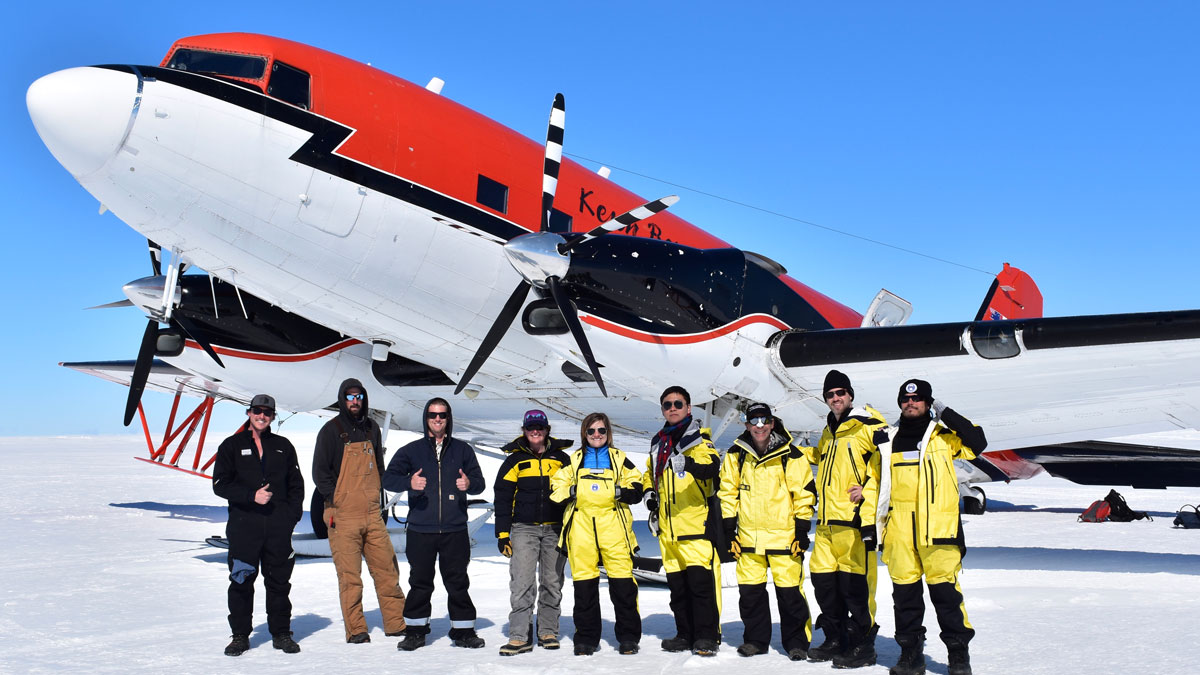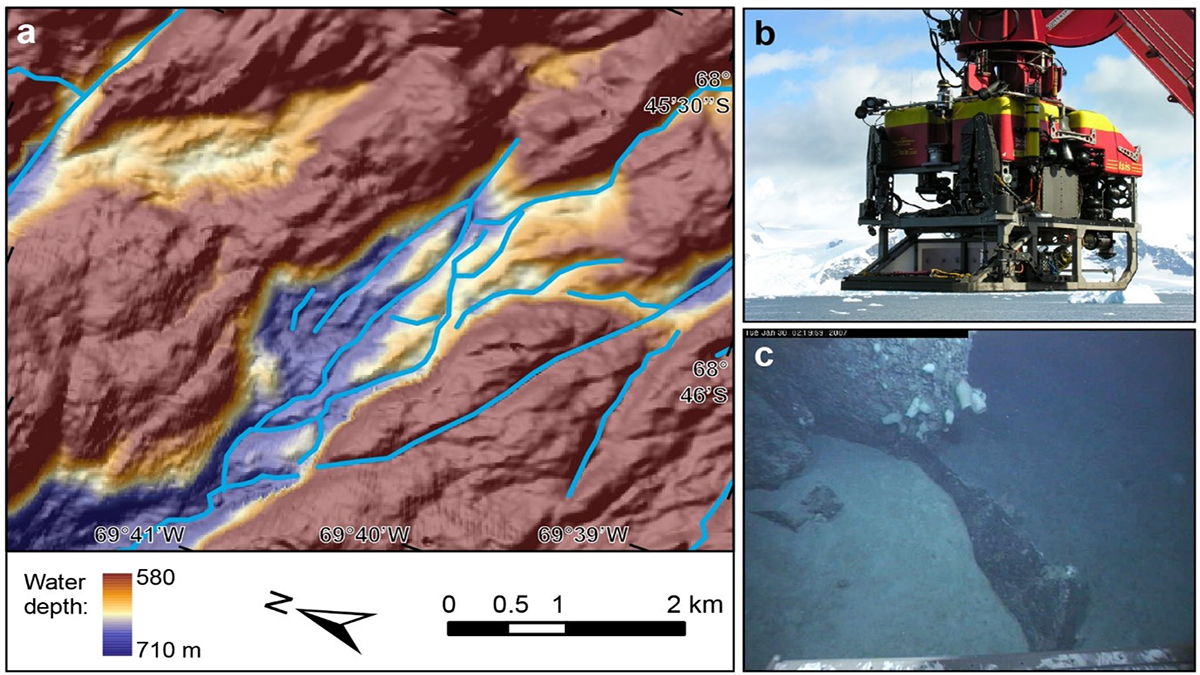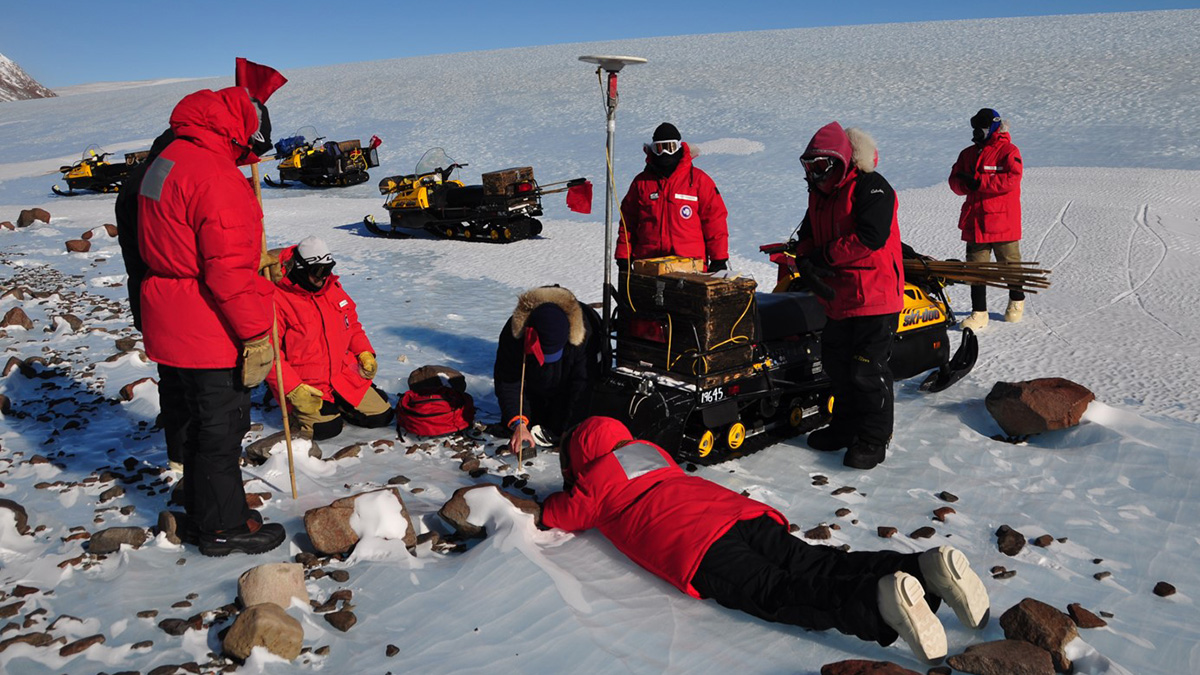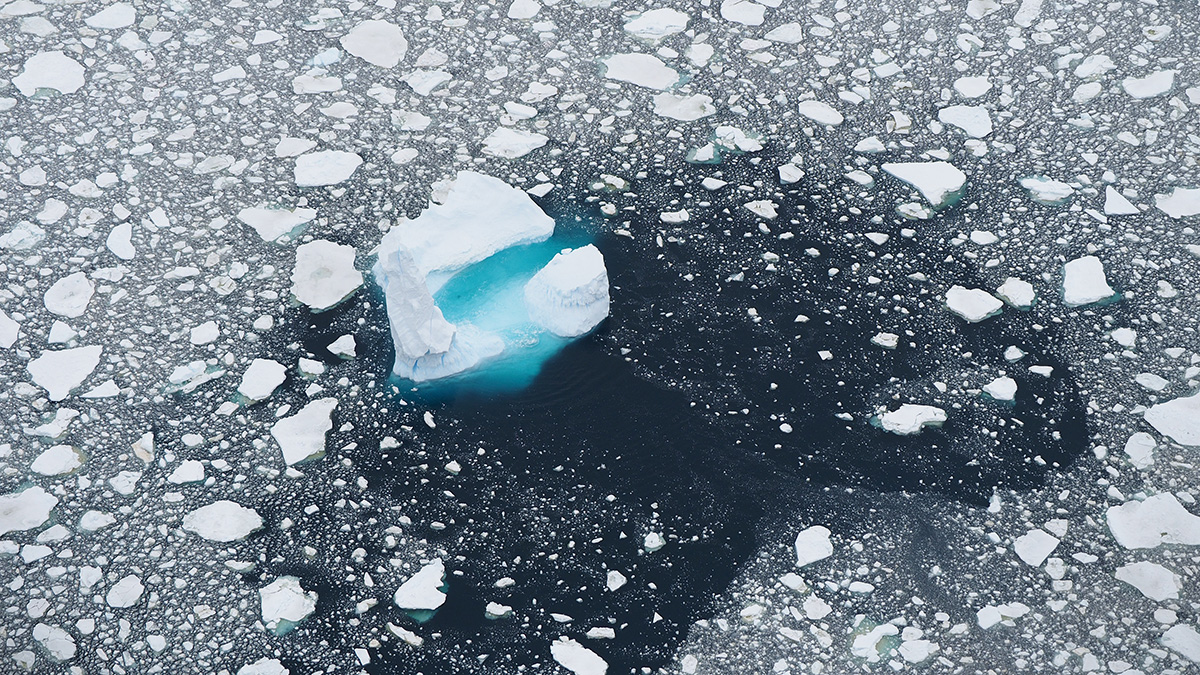Scientists dive in—metaphorically—to Lake Snow Eagle, only recently revealed through ice-penetrating radar.
Antarctica
Una nueva pista sobre el colapso de la plataforma de hielo antártica
Un tipo particular de tormenta coincidió con 13 de los 21 eventos recientes de desprendimiento en la Antártida.
A New Clue to Antarctic Ice Shelf Collapse
A particular kind of storm coincided with 13 of the 21 recent calving events in Antarctica.
New Observations Reveal Ancient Subglacial Water Paths
Analyses of new shipboard and ROV observations of bedrock channels carved by floods and outbursts from subglacial lakes under Antarctica shed light on complex subglacial processes.
Machine Learning Pinpoints Meteorite-Rich Areas in Antarctica
A new algorithm suggests that only a small fraction of meteorites present on the White Continent’s surface have been recovered to date.
Probing the Mysteries of Deep, Dense Antarctic Seawater
Twelve freely drifting Deep Argo floats reveal year-round dynamics of bottom water flow in the Australian-Antarctic Basin.
New Perspectives on the Enigma of Expanding Antarctic Sea Ice
Recent research offers new insights on Antarctic sea ice, which, despite global warming, has increased in overall extent over the past 40 years.
The Uncertain Future of Antarctica’s Melting Ice
A new multidisciplinary, international research program aims to tackle one of the grand challenges in climate science: resolving the Antarctic Ice Sheet’s contribution to future sea level rise.
Charting the “Bloody” Brine Flows from an Antarctic Glacier
Photographs and field observations yield a more complete historical record of the ebbs and flows of the so-called Blood Falls on Taylor Glacier.
Current History: Exploring the Past of the Tasman Leakage
A new study sheds light on an important Pacific-to-Atlantic connecting current, including the global changes that led to its flowing that ushered in near-modern ocean circulation.










